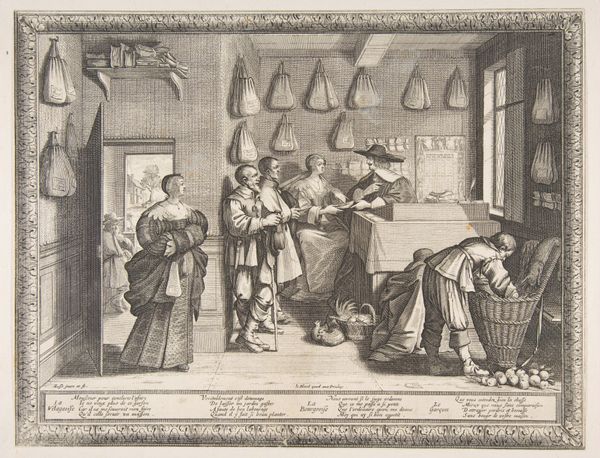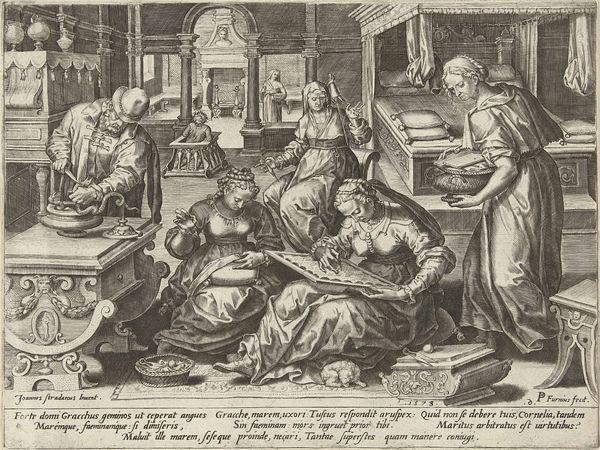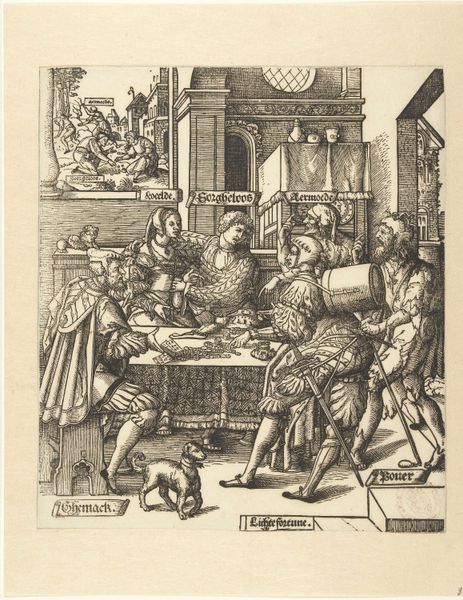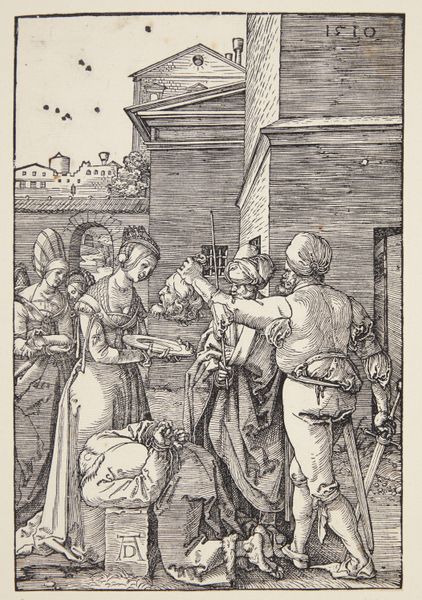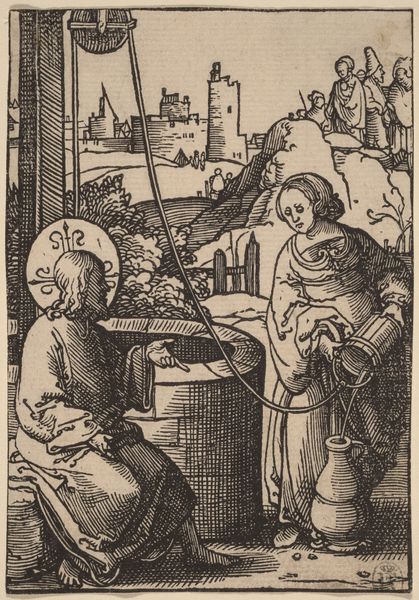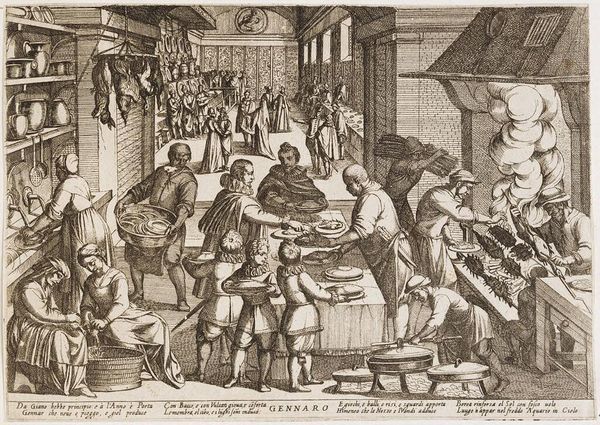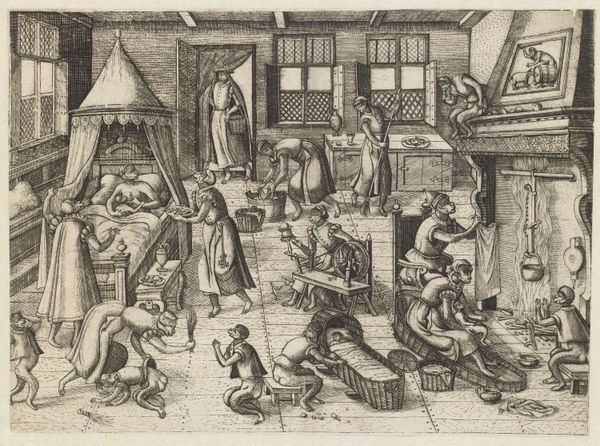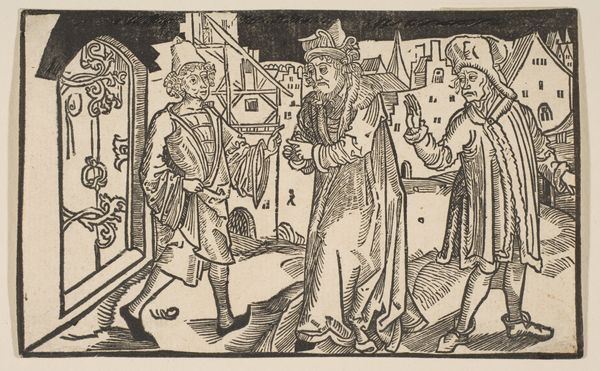
drawing, print, woodcut, engraving
#
drawing
#
narrative-art
# print
#
woodcut
#
history-painting
#
northern-renaissance
#
engraving
#
sword
Dimensions: sheet: 5 3/8 x 13 7/16 in. (13.7 x 34.2 cm)
Copyright: Public Domain
Curator: Let’s turn our attention to this striking print, Illustrations to Proverbs 10:1-3, made sometime between 1529 and 1539 by Daniel Hopfer. The combined engraving and woodcut medium speaks to experimentation in printmaking practices during the Northern Renaissance. What springs to mind when you first look at this piece? Editor: Chaos! But organized chaos, you know? It's teeming with tiny details, each little figure caught in their own drama. There’s something delightfully manic about the whole composition. It gives me a bit of an anxiety feeling but in a fascinating way. Curator: Right, let’s consider that. Hopfer's combination of engraving and woodcut wasn't merely aesthetic. It reflects the burgeoning print market and the demand for affordable imagery during the Reformation. Think about the labor involved: designing, cutting, and printing each section. It's quite an undertaking to translate such intricate detail. Editor: And to think of these moral lessons, right there in the home, shaping ideas through visual narrative. Do you think about the conversations it triggered? It's interesting, imagining the social impact of such a widely circulated image. I bet they sold them like crazy! Curator: Indeed! And speaking to the verses illustrated: wise sons gladdening their fathers, the futility of the godless's treasures, and the Lord nourishing the righteous. Editor: Look at how he's handled the light! Stark contrasts carve out each scene. It almost feels stage-lit, heightening the drama. Like these are little morality plays unfolding, these aren't static lessons. The devil in the middle scene particularly gets me! Curator: Exactly, and notice the textual annotations above each scene – reinforcing the verses for the literate viewer but providing additional guidance for the unlettered through familiar iconography and symbol usage that speak directly to class, status, and the production of knowledge within that cultural framework. Editor: Thinking about Hopfer himself, what personal message, what part of himself did he add to this? Or did he consider himself another cog within the media making of that era? Curator: It's tantalizing to wonder, isn't it? His blend of techniques alone suggests a desire to push boundaries, to find new ways of conveying meaning. The market-driven impulse doesn’t remove the fact that artists constantly refine the languages with which they make work! Editor: Right, I think my favorite aspect of that Northern Renaissance artwork is that the meaning isn’t fixed! And it's very easy to connect and associate. There is still so much to explore and discover… Curator: Precisely! Hopfer’s Proverbs encourage viewers to reconsider what these visuals really communicate with audiences of today, who receive meaning so much faster and readily, compared to its intended audience.
Comments
No comments
Be the first to comment and join the conversation on the ultimate creative platform.
